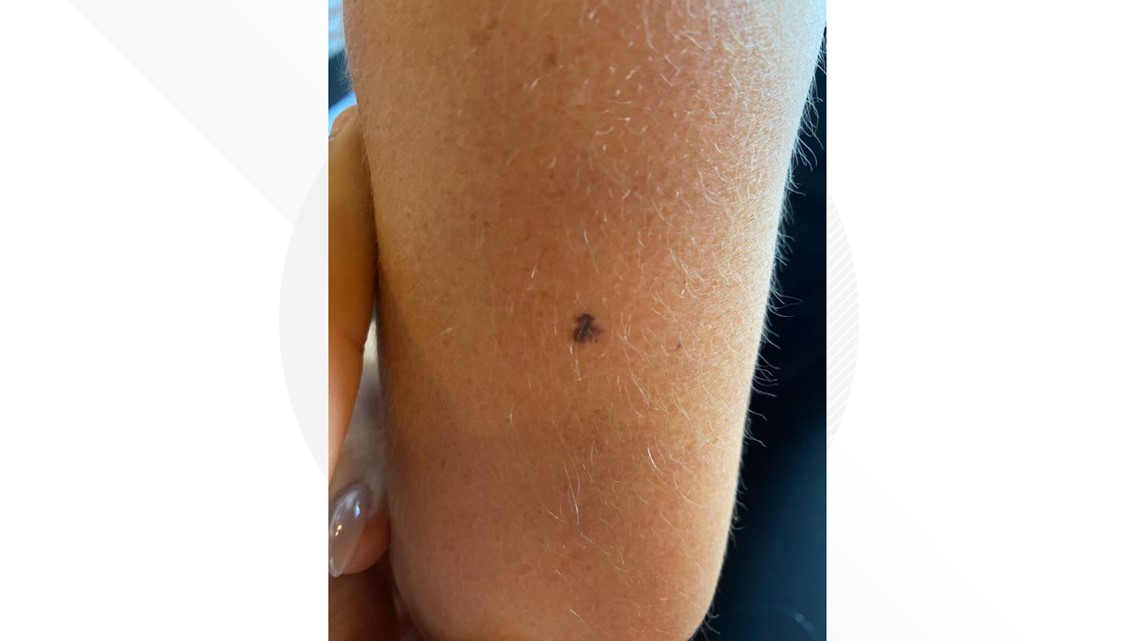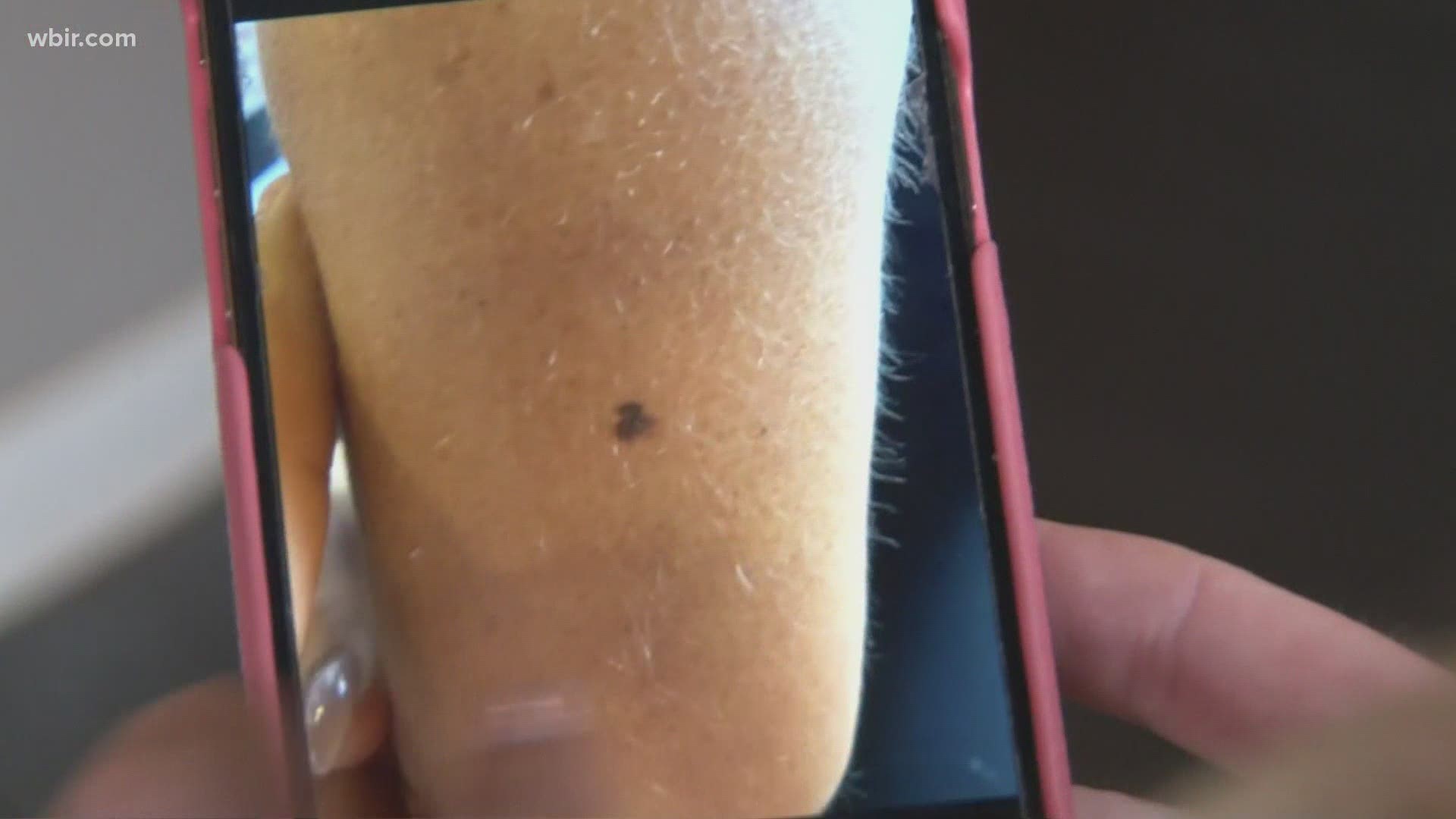KNOXVILLE, Tenn. — As summer creeps closer and you're spending more time outside, don't forget the sunscreen! Dermatologists say skin cancer cases are on the rise.
According to national data, one in five people will develop skin cancer in their lifetime. Now, some people are finding irregular moles even earlier in life.
Spanish Version: Dermatólogos recomiendan el uso diario de protectores solares para evitar el cáncer de piel
Brittany Reed knows that as a fact. She is an active 32-year-old who owns Turbo Spin cycling studio in Bearden.
This month, she went in to get a skin spot checked out after encouragement from a friend. She had a punch biopsy with Dr. Doppelt at Southeastern Dermatology.
"Sure enough, they called me back 24 hours later it was stage one melanoma," Reed said. "You think it happens in older people, but it can happen to any of us."
Looking back, she saw the spot in pictures from 2019. She didn't pay much attention to it then, and didn't see it on a regular basis because it was on the back of her left arm.


She had to get the spot cut out. Now she has stitches, bruises and a big bandage on the surgery site.
"Luckily I don't have to look at it all the time because it's on the back of my arm, so I'm very thankful for that, but it will serve as a reminder just to be aware of your body any changes anything abnormal that you see, just get it checked, get a second opinion," Reed said.


Dr. Elizabeth Anderson with Knoxville Institute of Dermatology says it's never too early to start wearing sunscreen every day.
"Taking precautions and protecting your skin from the sun, also avoiding activities like tanning, that can help decrease your risk for cancer," Anderson said.
Even on cloudy days, you can still get a sunburn and sun damage.
“Cloudy days still allow 80 percent of the sun's UV radiation to penetrate," Anderson said.
Whether it's lotion, cream or spray, the best kind of sunscreen is the one you wear. Make sure the packaging says "Broad Spectrum" so you can be sure to be protected from UVA and UVB rays.
Anderson explained sunscreen with SPF 30 and above is good to use.
Getting yearly skin checks with a doctor is also important. Look for the signs of irregular spots, using the "ABCDE" method.
'A' stands for asymmetry, one half not matching the other.
'B' is border irregularity. Moles should have round, crisp edges. If they are more of a jagged or irregular border, those can be worrisome features.
'C' is color variation, usually more than two shades of brown.
'D' is diameter larger than a pencil eraser.
'E' is the most important: evolution or growth and change over time. A mole that's changing is something you need to pay attention to.
Going into the summer, Reed is staying extra prepared with tons of sunscreen and long sleeve bathing suit coverups. She's sharing her story in hopes she can help someone else.
Anderson said it's important limit your time out in direct sunlight, avoid tanning, wear protective clothing and apply sunscreen 15 minutes before going outside.

